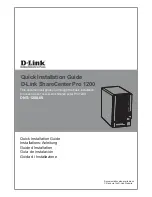
Chapter 5: Virtual Local Area Networks
In Depth
Faced with the problems of a slow network, many network administrators make expensive mistakes. Several
times, I have come across companies that have a fiber link to every desktop. In fact, an architectural firm I
consulted for comes to mind. The company used hubs to deliver data to each desktop. When the company
reached about 150 workstations in its LAN, the users began to complain about how slow their network and
PCs were becoming.
To deal with this problem, the two Microsoft NT administrators decided to upgrade their existing Category 4
cabling—which could adequately handle 10Mbps links to the desktops—to a fiber link. This was an
expensive mistake, to the tune of about $150,000. Both the administrators now know it was a mistake; but
because of their lack of knowledge of networking products, at the time they thought it was the best solution.
If the administrators had decided to implement a switched solution, they would have saved nearly $50,000 in
labor costs and $60,000 in cabling costs. Upgrading the cabling and line speed is a solution—not the best, in
most situations, but it resolves the issue. A much cheaper solution is available; it will segment your network
into smaller broadcast domains, eliminate most collisions, and resolve your network and PC performance
problems.
In this chapter, you will learn not only about switched networks, but how virtual LANs (VLANs) can be used
in place of a router to segment your LANs. Most Ethernet and network problems are caused by too many
nodes trying to send data at one time, thereby causing collisions and overutilization of the network wire. As an
administrator, you may not even realize when it is time to convert your company to a switched network and
implement VLANs. You also may not be aware of the benefits that can occur from replacing your Layer 2
hubs and bridges with switches, or how adding some modules in your switches to implement routing and
filtering can improve your network’s performance. Let’s begin with a quick review of a flat topology network.
The Flat Network of Yesterday
The flat topology network was discussed in Chapter 1. As you will remember, a flat topology is a LAN
connected by bridges and hubs. Every node in the network sees the data being passed by every other node on
the network. This arrangement eats up an incredible amount of processing power and bandwidth, even without
collisions forcing data to be re−sent on the physical wire. A flat topology network begins to slow down due to
traffic, collisions, and other bottlenecks. When problems of this nature occur, you must investigate them.
As a network administrator, you should have the resources to adequately determine the types of data that are
flowing throughout your network. You should have a good network Sniffer, or other such device, to find
over−utilization problems as well as faulty equipment and unnecessary protocols running on the network.
Of the Layer 3 protocols, TCP/IP is the most popular because it is less chatty than the other common Layer 3
protocols, IPX and Appletalk. Most network administrators agree that if you have bandwidth to kill, you can
add Internetwork Packet Exchange (IPX) and Appletalk, which like to scream “I’m here on the network” quite
frequently—thereby eating up bandwidth. A few devices on the network won’t use too much bandwidth; but
as the number of network nodes increases, so does the number of broadcasts required to identify the nodes
running those protocols on the network.
Users are usually the first to notice the problems of an over−utilized network. For example, the users’
state−of−the−art Pentiums begin to perform poorly. Because many network administrators are fluent in
operating systems and not the network, most don’t realize that the problem may be due to the hundreds of
computers on a flat topology that uses hub and bridges. In this type of environment, every data packet is sent
to every node on the network; and every node on that segment of the network has to process every frame on
88
Summary of Contents for Catalyst 1900 Series
Page 1: ......
















































